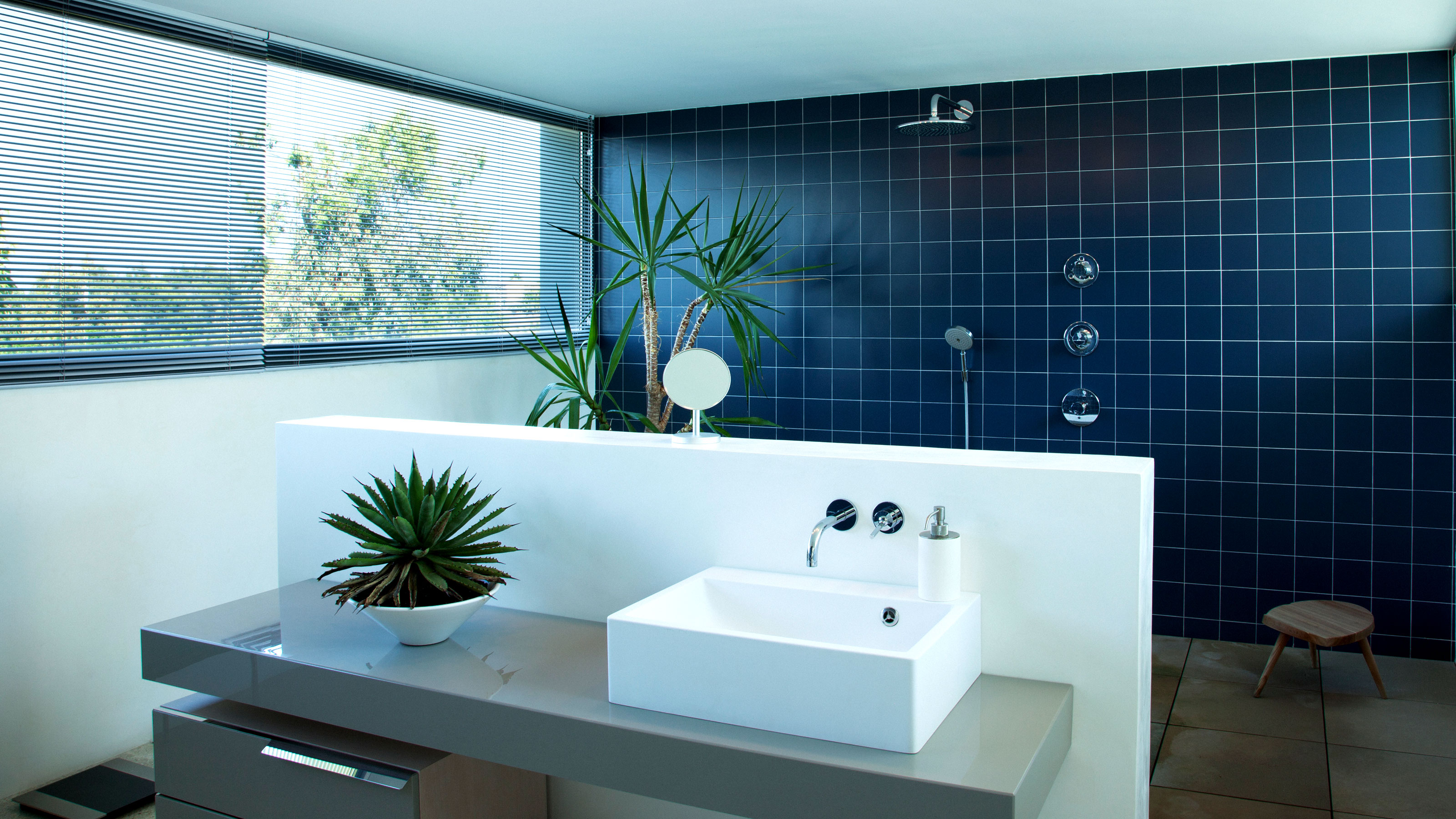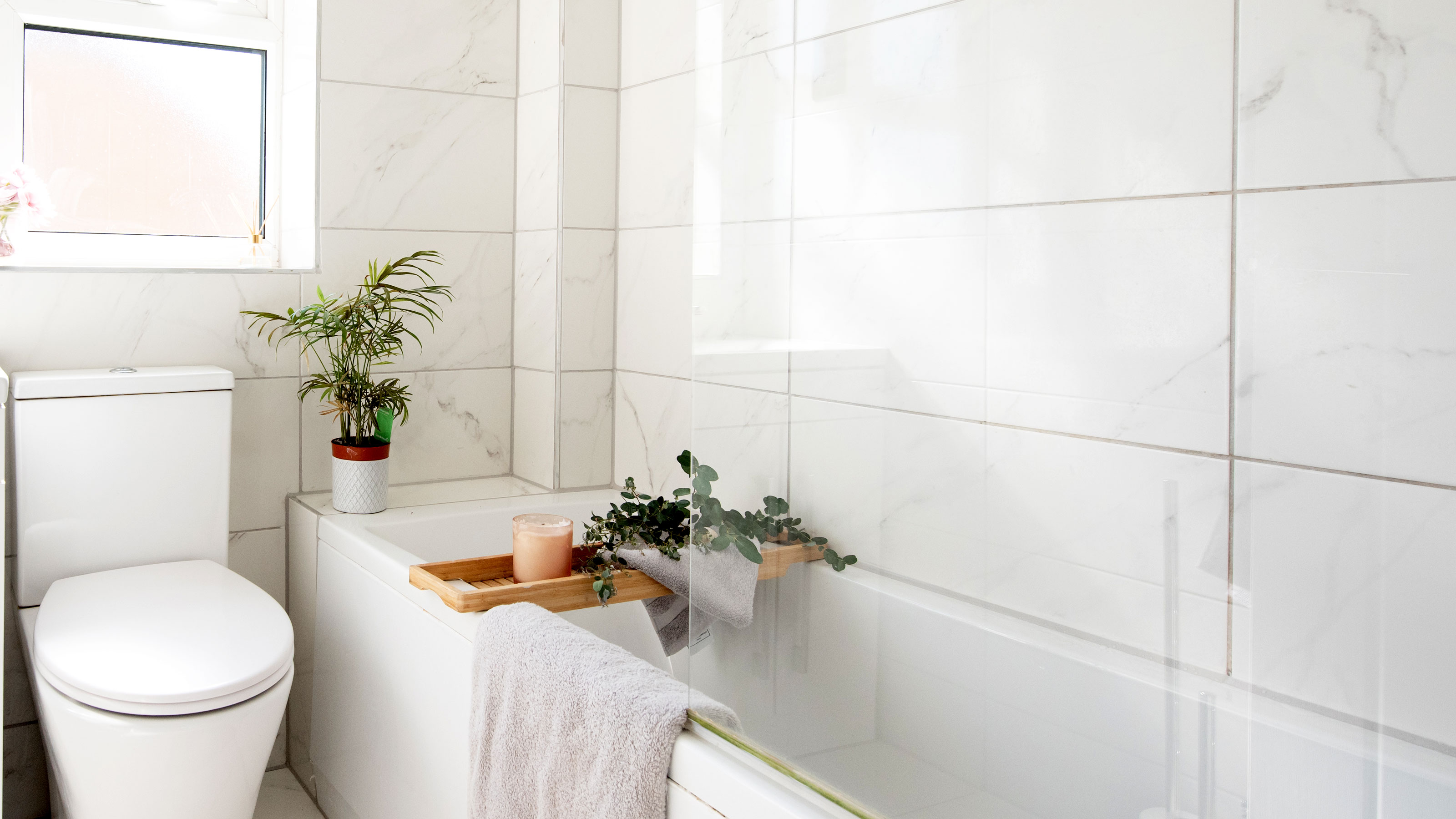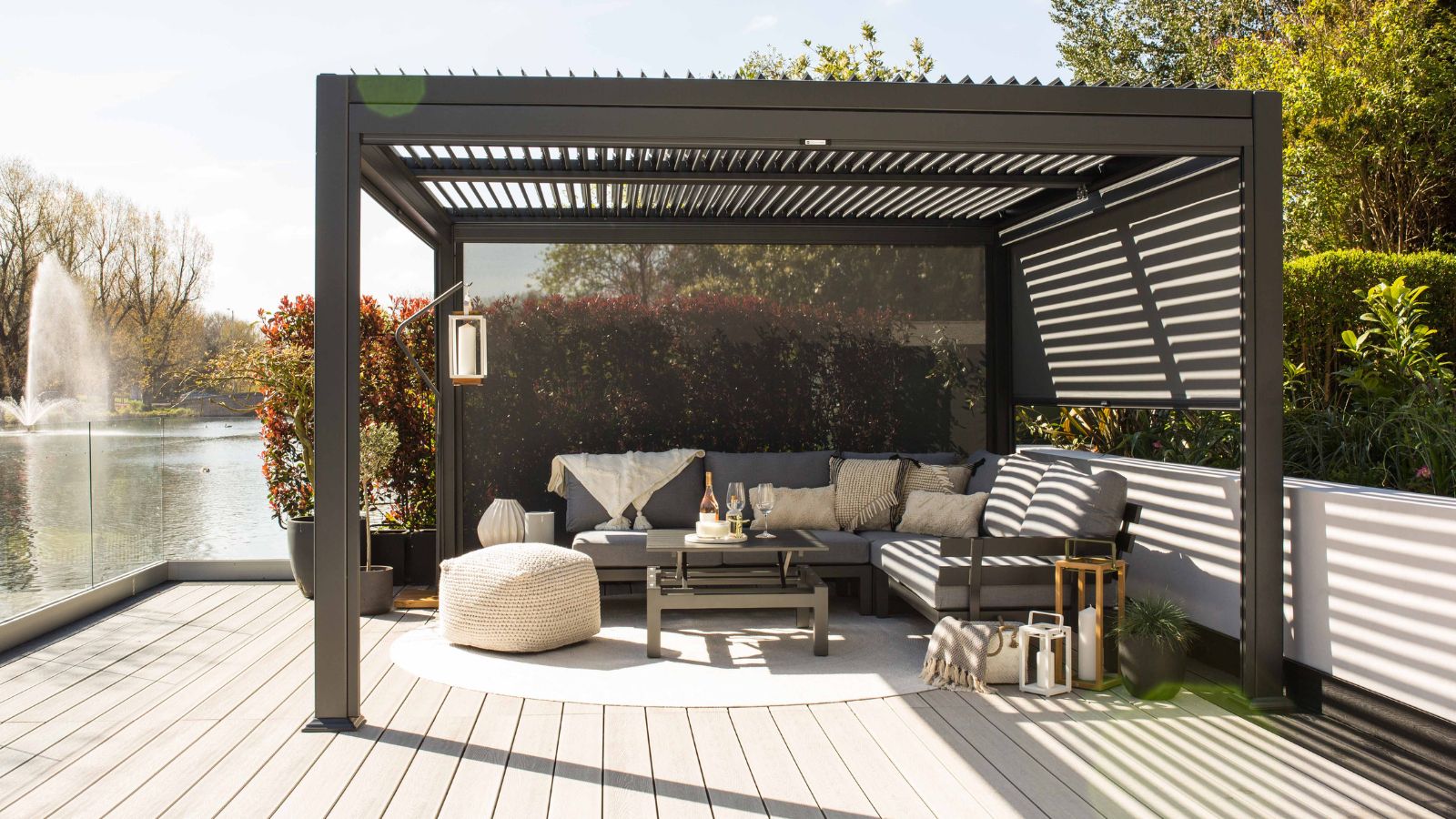Tiling a bathroom for a flawless finish: What to consider before you start
What do you need when tiling a bathroom? Here we reveal what tiles you need, ideas to enhance your vision, costs and practical tips to get the look you want

When tiling a bathroom there’s a host of factors to consider before the tiles even make it to your bathroom walls or floors. Do you know what tiles you need? Do you know what style you want? Do you know what pattern you would like? What costs do you need to consider? Are you going to do the job yourself?
Answer these questions and you’re a long way to getting your dream bathroom. If you know how to tile a wall or floor you could half your costs and spend the extra cash on more expensive tiles or put it towards another home improvement project.
Tiling a bathroom: What to know before you start
Here we look at the decisions you need to make and the practicalities you need to consider before you start tiling a bathroom
1. Choosing bathroom tiles
The first consideration is the placement of the tiles. Are they going on the floor or wall? You will need different tiles for both. Wall tiles are typically smaller and lighter and aren't as hard wearing as they don't encounter any footfall, unlike floor tiles.
However, you can use floor tiles on walls, typically in showers or to enhance your wet room ideas. But you will need to consider the weight and the surface that the tiles are being applied to. Different surfaces can deal with different weights, so you need to make sure that your tiles and surface are compatible.
As an example a standard gypsum plastered wall can hold around 20kg of weight per square metre. This includes tiles and adhesive. Other materials such as gypsum plasterboard can carry more weight, but use the 20kg limit as a guideline to ensure you get a good finish. Consult a professional if looking to use heavier tiles.
Tiles come in various finishes and a gloss finish is a popular choice for family bathrooms that get used frequently as they are low maintenance and easy to clean. A large format version will need even less maintenance as there is less grout to deal with. Textured or matt tiles need more maintenance and are not so easy to clean. So they are often a preferred choice for luxury bathrooms.
2. Have a clear vision
Have you got a vision for your bathroom in your head? Or do you need some inspiration and ideas to help get the bathroom of your dreams? Do you want something practical and straightforward such as tiles around the bath, sink or shower. Or, do you want something more lavish and decadent?
There’s a myriad of possibilities to choose from. Do you want different tiles for different zones in your bathroom? Do you want to go from floor to ceiling? Do you want a contrasting splashback? Fancy wood effect tiles on your floor? Find a host of help hints and inspiration in our 20 beautiful bathroom tiling ideas guide to help realise your dream bathroom.
3. Pick a tiling pattern
A simple straightforward brickwork pattern is a popular choice as it's one of the easiest to lay and provides a timeless aesthetic. Its 50/50 layout is a traditional choice and fits well in most bathrooms. Variations include staggered brick, which has a 70/30 layout and a vertical brick layout which follows the 50/50 pattern but goes from floor to ceiling rather than wall to wall.
Herringbone is another popular tile pattern, offering something a little different to the standard brick pattern. You can go vertical, horizontal or choose a more conventional block version. Linear tile patterns where the edges match up to create neat straight grout lines is another popular option for large format tiles.

4. Work out your tiling budget
The big cost when tiling a bathroom is the tile, but the costs can vary greatly depending on what type of tile you purchase. As a (very) general rule bathroom wall tiles are cheaper than bathroom floor tiles, but you will typically be tiling more wall space than floor space. If tiling all walls you could easily be using four times as many wall tiles as floor tiles.
Measure up so you can ask yourself how many tiles do I need? This is especially important if you are on a budget. The variation in tile prices can make a big difference on the overall cost. For example, if you have a 10m2 bathroom to tile and you are using Metro tiles like these Colours Trentie White Gloss Metro Ceramic Indoor Wall Tile from B&Q the tiles would cost around £170 (remember to add 10% for wastage). However, if you are using a more specialist tile that costs £45m2 you will be spending over £450 on tiles alone.
Then there are the costs of adhesive and grout to add to the overall cost. This will be a far smaller portion of the overall price, but still expect to pay around £30 for both. Check out our How much tile adhesive do I need guide to get a better idea of cost. If calling in a pro to get your tiling done expect to pay around £150-£200 a day for labour. An average sized bathroom should be a one or two day job.
If your bathroom already has tiles on the walls you can tile over tiles, but only if you have one layer of tiles already installed. If you need to remove the current tiles before you tile again, you may have to get the wall replastered before you can tile. This will add at least another £150 to the overall cost. But it could be a lot more depending on how many walls need replastering.
5. DIY tiling vs paying a pro
A competent DIYer will be able to tackle the basics like metro tiles on a wall in a standard brick pattern. But there are still plenty of subtle skills you will need to know to help you get a professional looking finish. The key is to make sure that you start in the right place and the tiles are level when working with walls. Floors need a different approach. Check out our how to tile a bathroom floor guide to learn more.
FAQs
What grout do I need for my bathroom tiles?
A general cement based wall and floor grout like this Flexible Ivory Grout from B&Q is a popular choice for most grouting jobs. It is flexible and water resistant. It is worth noting that cement based grout can go darker when wet, but will return to its original colour when dry. Most grouts are suitable for gaps up to 5mm, check the packaging to see what the manufacturer recommends. Gaps over 5mm typically need a sanded grout that doesn’t shrink as much as cement based grout.
If using a coloured grout it's important that you mix grout properly to make sure you get even colour when the grout is applied. If you don’t mix properly you can get a patchy finish.
What gaps do you leave between tiles?
Wall tiles commonly have a 2mm or 3mm gap and to make sure that you get even gaps between every tile you will need to use spacers such as these Vitrex Plastic 3mm Tile spacer from B&Q. Depending on your tiles and design you may have 5mm gaps on your walls. Again for even gaps use 5mm spacers. One tip is to place the spacers so one part of the spacer is pointing outwards so you can pull out when the adhesive is dry and reuse. When tiling a bathroom floor 5mm -10mm gaps are commonplace. Make sure to get the right size spacers for the job.
How long does it take to tile a bathroom?
This will depend very much on the size of the space being tiled, what size tiles are being used, how simple or complicated the area being tiled is, the pattern being used and whether you are doing it yourself or you are getting in a pro to do the job. As a general guideline a straightforward square metre of tile should take around an hour or less. But, if you have to tile window recesses or corners then the job will take longer. An average sized bathroom should take around two days to tile and grout.
Get the Homebuilding & Renovating Newsletter
Bring your dream home to life with expert advice, how to guides and design inspiration. Sign up for our newsletter and get two free tickets to a Homebuilding & Renovating Show near you.
Steve Jenkins is a freelance content creator with over two decades of experience working in digital and print and was previously the DIY content editor for Homebuilding & Renovating.
He is a keen DIYer with over 20 years of experience in transforming and renovating the many homes he has lived in. He specialises in painting and decorating, but has a wide range of skills gleaned from working in the building trade for around 10 years and spending time at night school learning how to plaster and plumb.
He has fitted kitchens, tiled bathrooms and kitchens, laid many floors, built partition walls, plastered walls, plumbed in bathrooms, worked on loft conversions and much more. And when he's not sure how to tackle a DIY project he has a wide network of friends – including plumbers, gas engineers, tilers, carpenters, painters and decorators, electricians and builders – in the trade to call upon.

